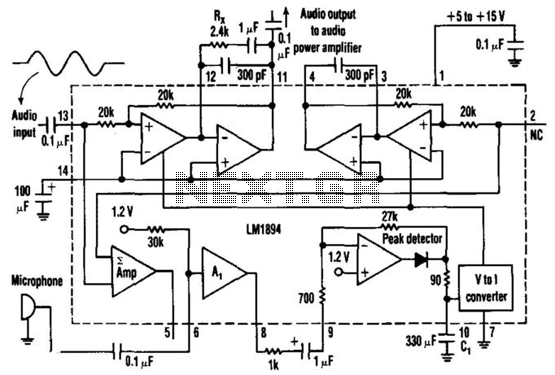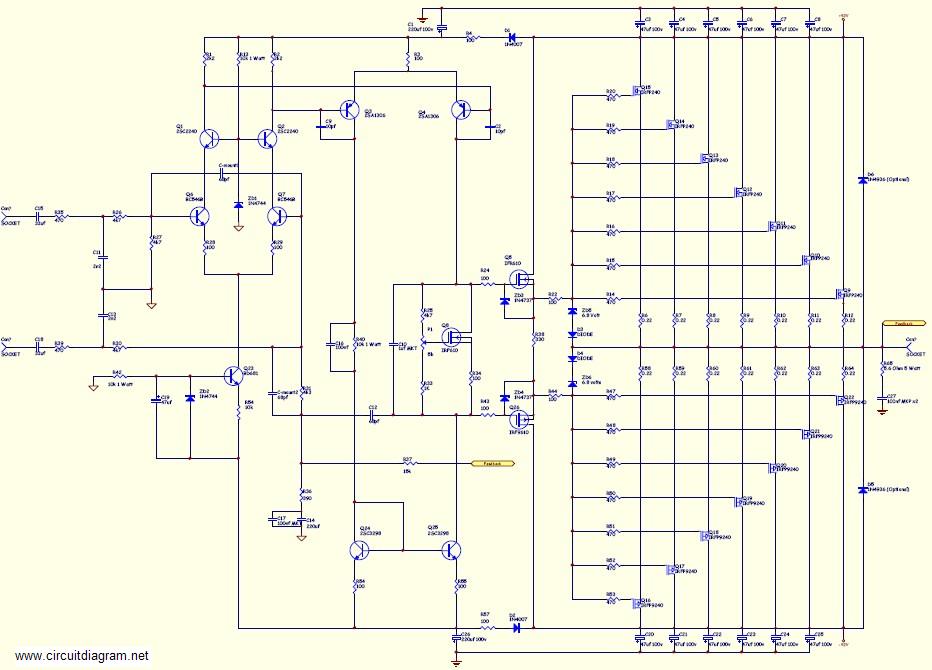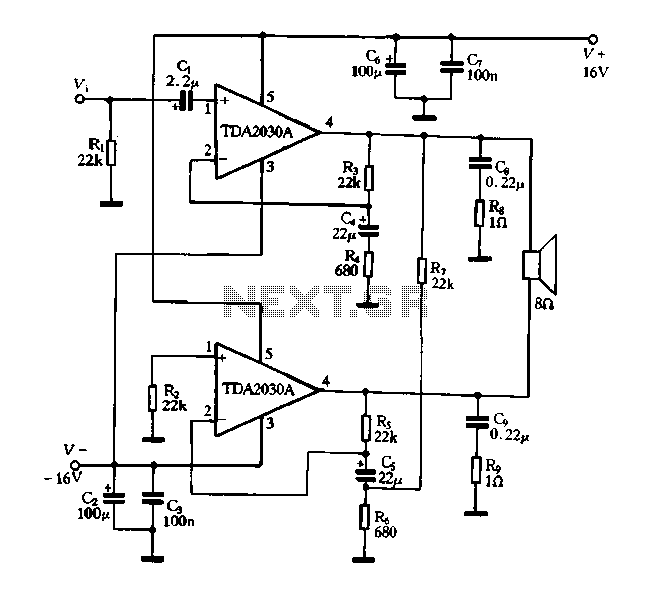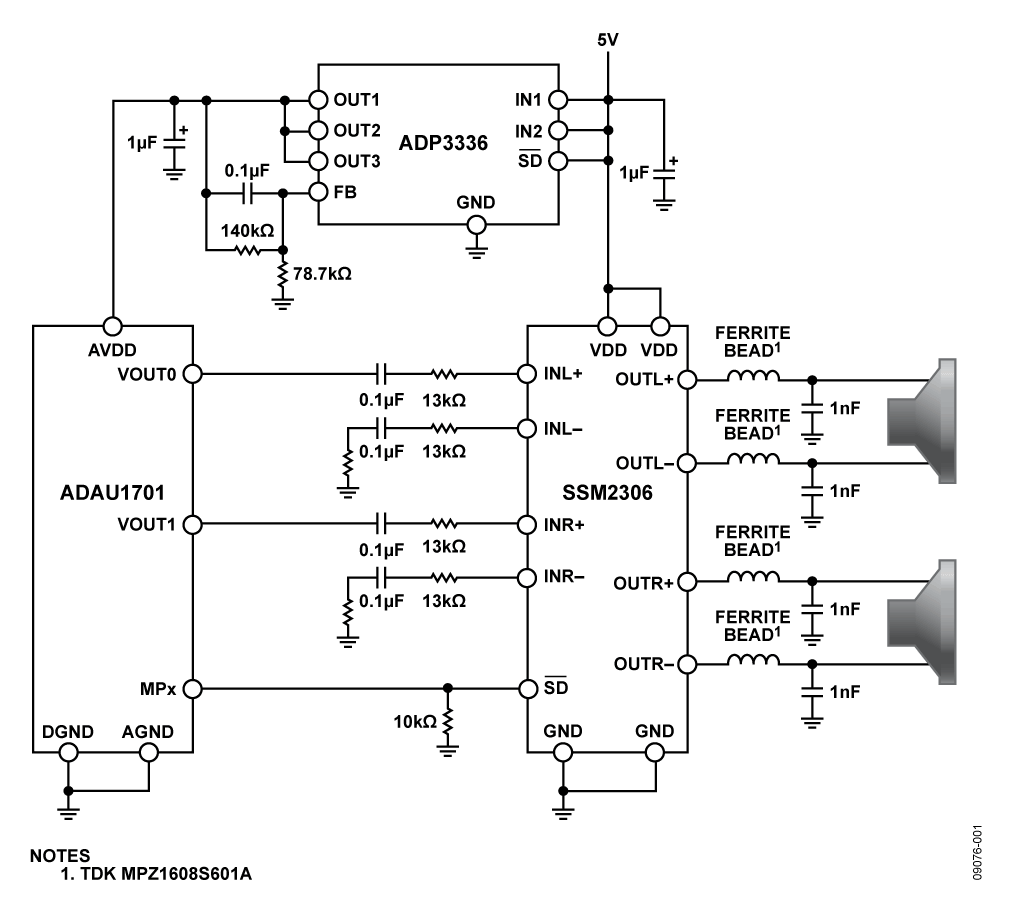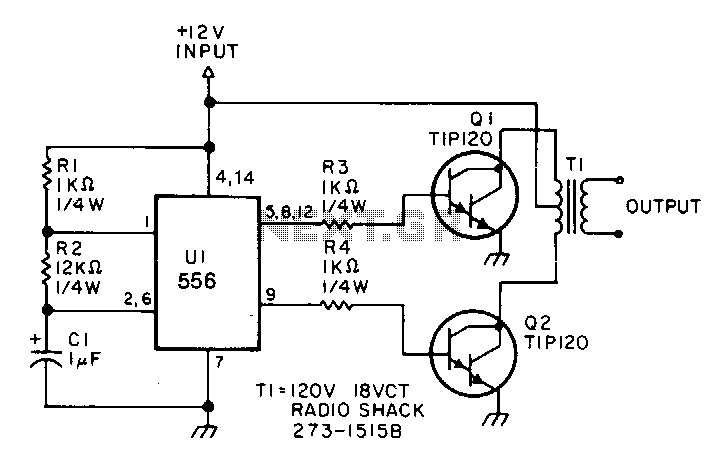
2800w high power audio amplifier
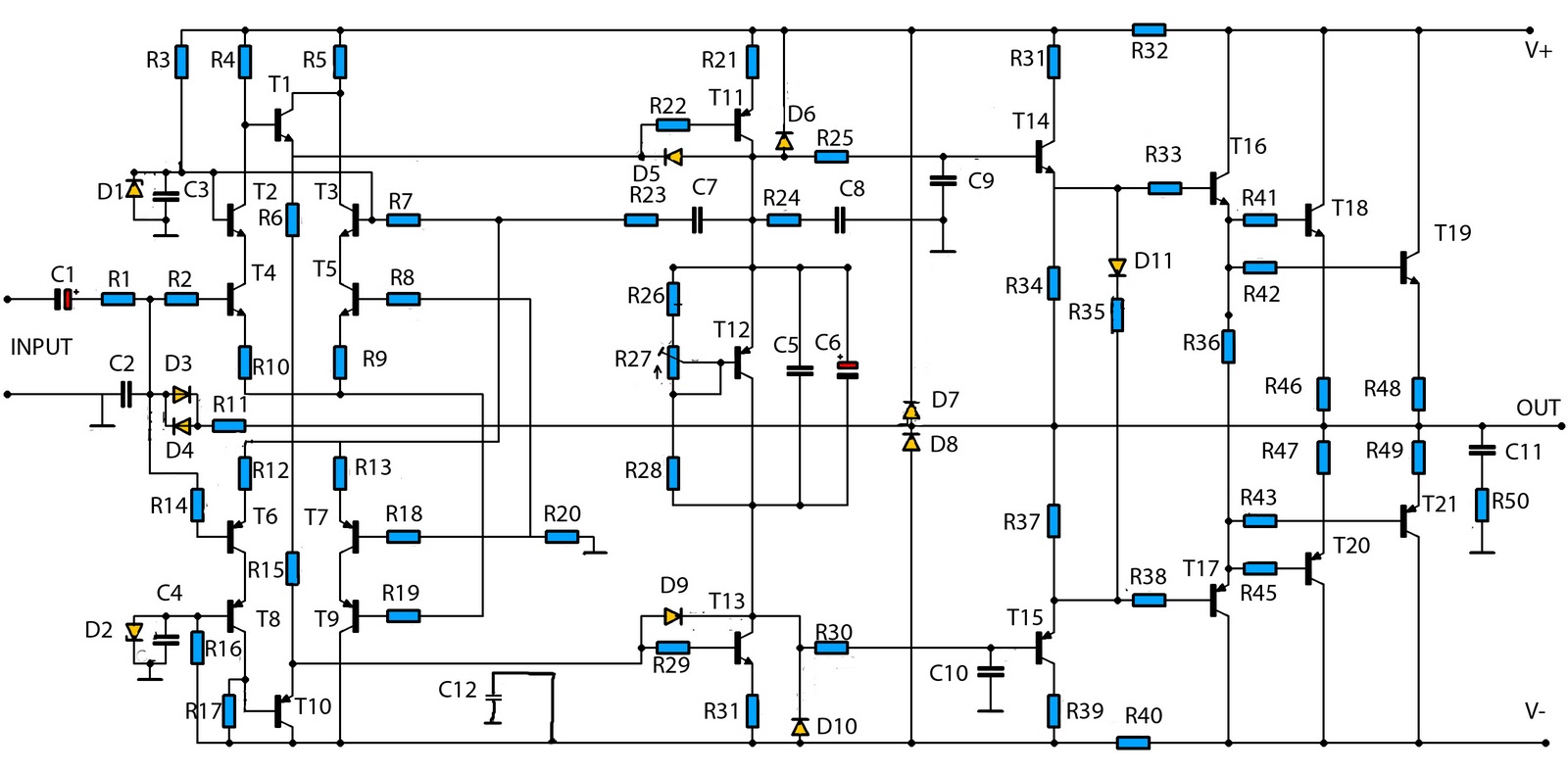
The mono high power amplifier is rated at 1400 W. To create a stereo high power amplifier, which would require a total of 2800 W, the necessary components and PCB must be doubled. The schematic circuit diagram provided is incomplete. The finished circuit incorporates gain stages using two JRC4558 integrated circuits. The circuit employs multiple transistors and other components for buffering, driving, and boosting, as detailed in the component list. The high power amplifier project presented is only part of the buffer and driver section, while the booster section has not yet been developed. Additional transistors for the booster or high power amplifier output stage can be found in the booster output power amplifier schematic.
The mono high power amplifier circuit is designed to deliver a maximum output of 1400 W, making it suitable for high-performance audio applications. To achieve stereo sound, the circuit must be duplicated, resulting in a total output capability of 2800 W. This necessitates careful consideration of the power supply, PCB layout, and thermal management to accommodate the increased power demands.
The schematic provided illustrates the basic configuration of the amplifier, which includes gain stages utilizing two JRC4558 operational amplifiers. These op-amps are known for their low noise and high fidelity, which is essential for maintaining audio quality in high power applications. The configuration typically involves using the op-amps in a differential amplifier setup to enhance the signal before it is sent to the output stage.
The amplifier circuit also incorporates various transistors that serve as buffers and drivers. These transistors are critical for managing the current flow and ensuring that the amplifier can drive low-impedance loads without distortion. The choice of transistors will affect the overall performance, including factors such as bandwidth, linearity, and thermal stability.
The booster section of the amplifier, which has not yet been implemented in the current design, is vital for achieving the desired output power levels. This section would typically include additional transistors configured in a push-pull arrangement to drive the output stage effectively. The layout should ensure minimal signal degradation and adequate heat dissipation, as high power levels can generate significant heat.
In summary, the presented high power amplifier circuit is a robust design that, while currently incomplete, lays the foundation for a high-performance audio system. Future enhancements, particularly in the booster stage, will be necessary to realize the full potential of the amplifier in stereo applications.Mono high power amplifier is actually a powerful 1400 W, but if this hihgh power amplifier circuit is doubled and you want to create stereo, high power amplifier the necessary components and pcb requires two-fold. So if the stereo high power amplifier 2 X 1400W. Schematic Circuit diagram is still less by looking at the circuit that was so below, t he finished circuit has been added with a gains using JRC4558 IC by the two and the picture ic where it can be seen below. For circuit buffers, drivers, and booster use multiple transistors and other components (can be seen listed component).
And high power amplifier project that is so below is just part of the buffer and driver while the booster has not been made. For additional transistors in the booster or high power amplifier end scheme can be found Booster output power amplifier.
🔗 External reference
The mono high power amplifier circuit is designed to deliver a maximum output of 1400 W, making it suitable for high-performance audio applications. To achieve stereo sound, the circuit must be duplicated, resulting in a total output capability of 2800 W. This necessitates careful consideration of the power supply, PCB layout, and thermal management to accommodate the increased power demands.
The schematic provided illustrates the basic configuration of the amplifier, which includes gain stages utilizing two JRC4558 operational amplifiers. These op-amps are known for their low noise and high fidelity, which is essential for maintaining audio quality in high power applications. The configuration typically involves using the op-amps in a differential amplifier setup to enhance the signal before it is sent to the output stage.
The amplifier circuit also incorporates various transistors that serve as buffers and drivers. These transistors are critical for managing the current flow and ensuring that the amplifier can drive low-impedance loads without distortion. The choice of transistors will affect the overall performance, including factors such as bandwidth, linearity, and thermal stability.
The booster section of the amplifier, which has not yet been implemented in the current design, is vital for achieving the desired output power levels. This section would typically include additional transistors configured in a push-pull arrangement to drive the output stage effectively. The layout should ensure minimal signal degradation and adequate heat dissipation, as high power levels can generate significant heat.
In summary, the presented high power amplifier circuit is a robust design that, while currently incomplete, lays the foundation for a high-performance audio system. Future enhancements, particularly in the booster stage, will be necessary to realize the full potential of the amplifier in stereo applications.Mono high power amplifier is actually a powerful 1400 W, but if this hihgh power amplifier circuit is doubled and you want to create stereo, high power amplifier the necessary components and pcb requires two-fold. So if the stereo high power amplifier 2 X 1400W. Schematic Circuit diagram is still less by looking at the circuit that was so below, t he finished circuit has been added with a gains using JRC4558 IC by the two and the picture ic where it can be seen below. For circuit buffers, drivers, and booster use multiple transistors and other components (can be seen listed component).
And high power amplifier project that is so below is just part of the buffer and driver while the booster has not been made. For additional transistors in the booster or high power amplifier end scheme can be found Booster output power amplifier.
🔗 External reference
